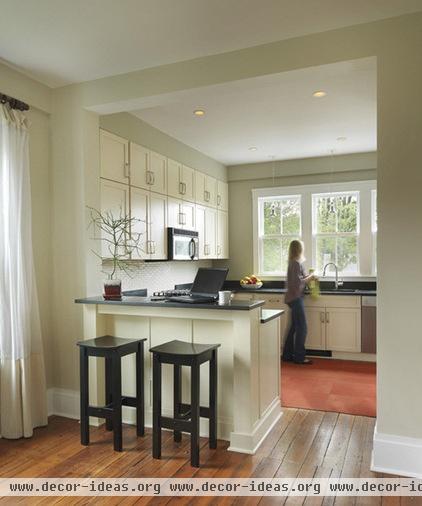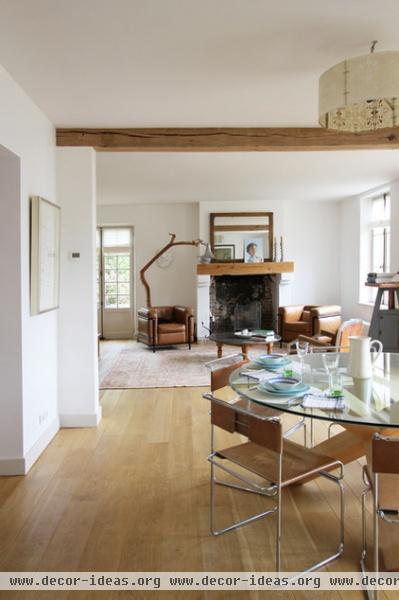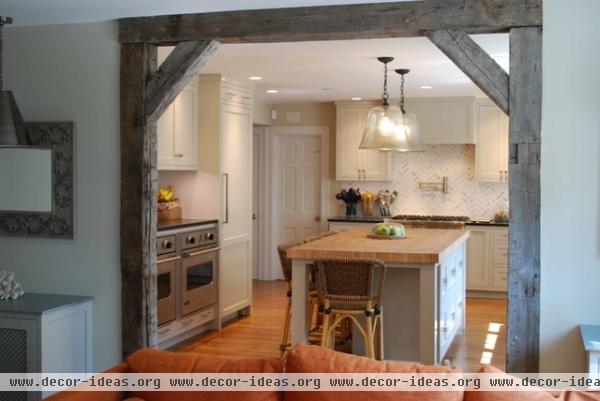Tearing Down a Wall? 6 Ways to Treat the Opening
http://decor-ideas.org 09/14/2013 20:30 Decor Ideas
Have you thought of removing that wall between your kitchen and dining room to create a larger eat-in kitchen? Or maybe combine two smaller bedrooms into a spacious master suite? There are many reasons to open rooms up to each other — it's one of the most frequent requests I get in remodeling projects.
Opening up a space is not as intimidating as you might think. But how you treat that opening will depend on various factors, including the structure, your budget and the style of your space. Consult a local architect or structural engineer to determine if the wall is structural first. If so, you'll need to size a beam accordingly.
Below you'll learn more about how to treat a new opening in the walls of your home.

1. Wrap it in drywall. One of the simplest and least expensive ways to treat a wall opening is to wrap it in drywall. Here you can see the structural beam above and the two columns supporting it on the ends. This detail feels more contemporary than an opening that is trimmed out in wood, so I would recommend it if your overall design has clean and simple detailing.

2. Case it out. In a home with traditional details, it works well to case out an opening with painted wood trim. The trim may be the same size as your typical door and window casing, or it may be larger to reflect the larger scale of the opening.

3. Add columns. Columns can be structural or aesthetic, to support the beam above and also to help separate the spaces while keeping them open to each other. If the columns are structural, then the beam above can be smaller, since it will span only the distance between the columns and not the entire opening. The wider the opening, the deeper the beam will need to be.

4. Include storage. While removing walls can provide desirable openness, there can also be unintended consequences, like losing space for storage. Partial-height built-ins used as room dividers can replace that lost storage space. Columns and built-ins can also accommodate light switches, HVAC registers and even plumbing and ductwork chases to the floor above.

5. Create an accent. A reclaimed wood beam can span an opening, as long as an architect or engineer's calculations determine that it can carry the load. As an alternative, an engineered wood or steel beam can be wrapped in a thin layer of wood to achieve a similar look.

6. Hide a structural beam. If you want the two rooms to feel like one continuous space, you may be able to hide a structural beam in the ceiling (also called a flush beam). This will create a seamless transition, but a structural beam may be more costly than a beam that protrudes from the ceiling. This detail typically lends itself to more modern design.

Whether you choose to make a feature out of your wall opening or to keep the transition between rooms as smooth as possible, an architect can help determine the right solution for your style and budget.
More: How to change a load-bearing wall to make two rooms into one
Related Articles Recommended












